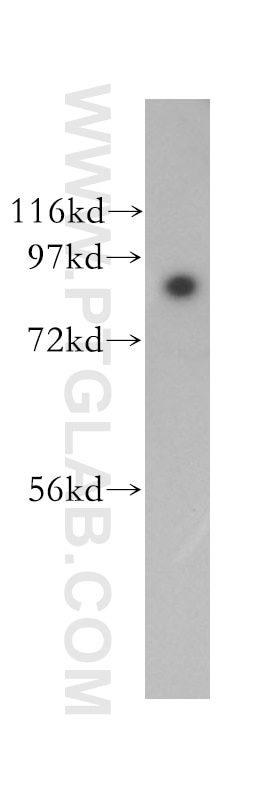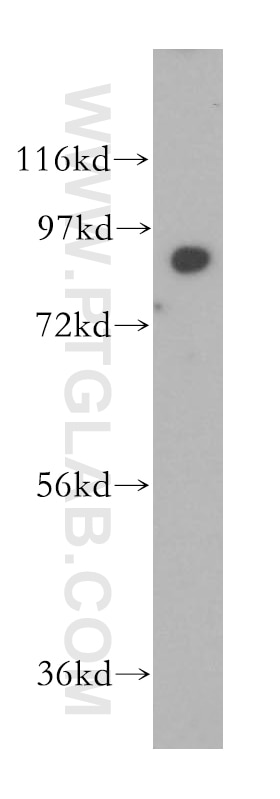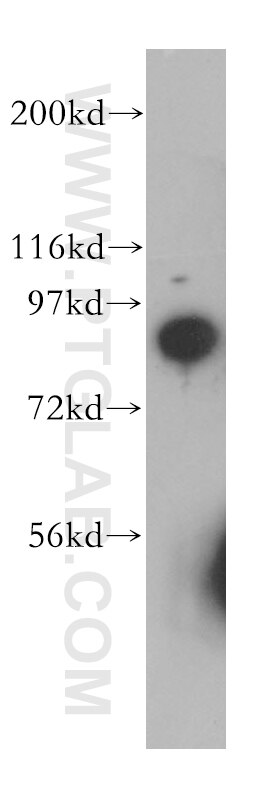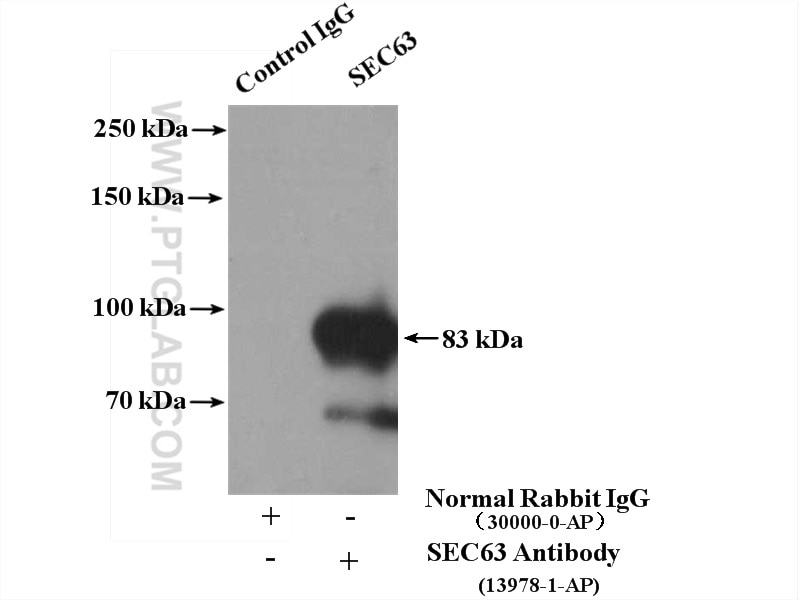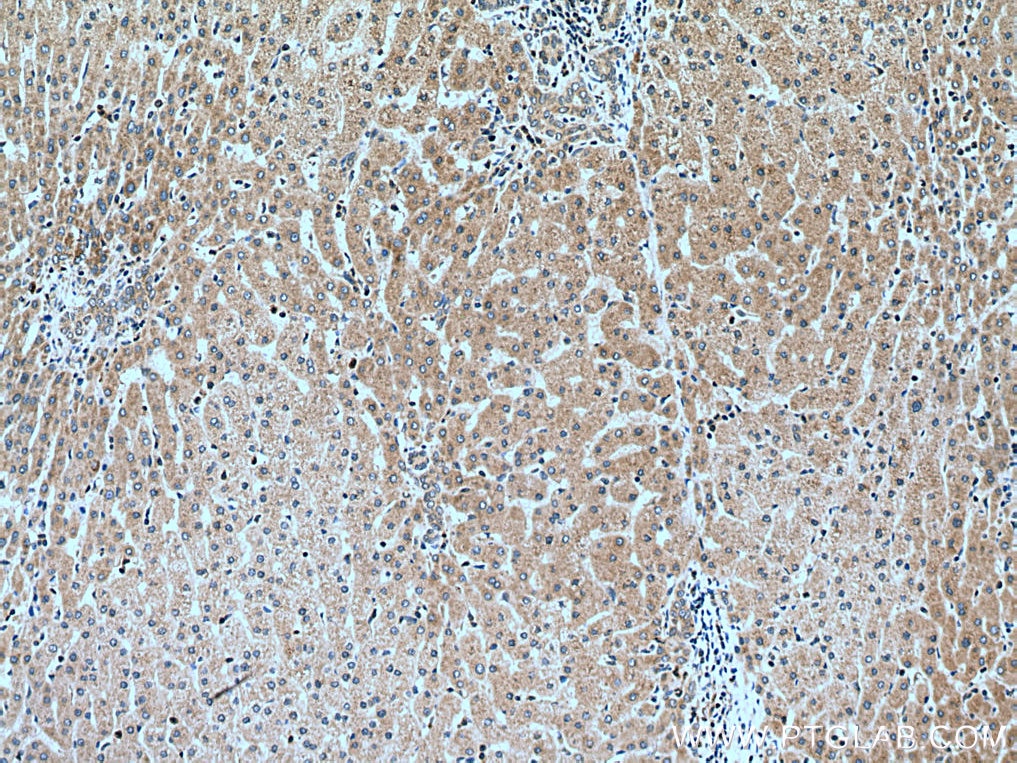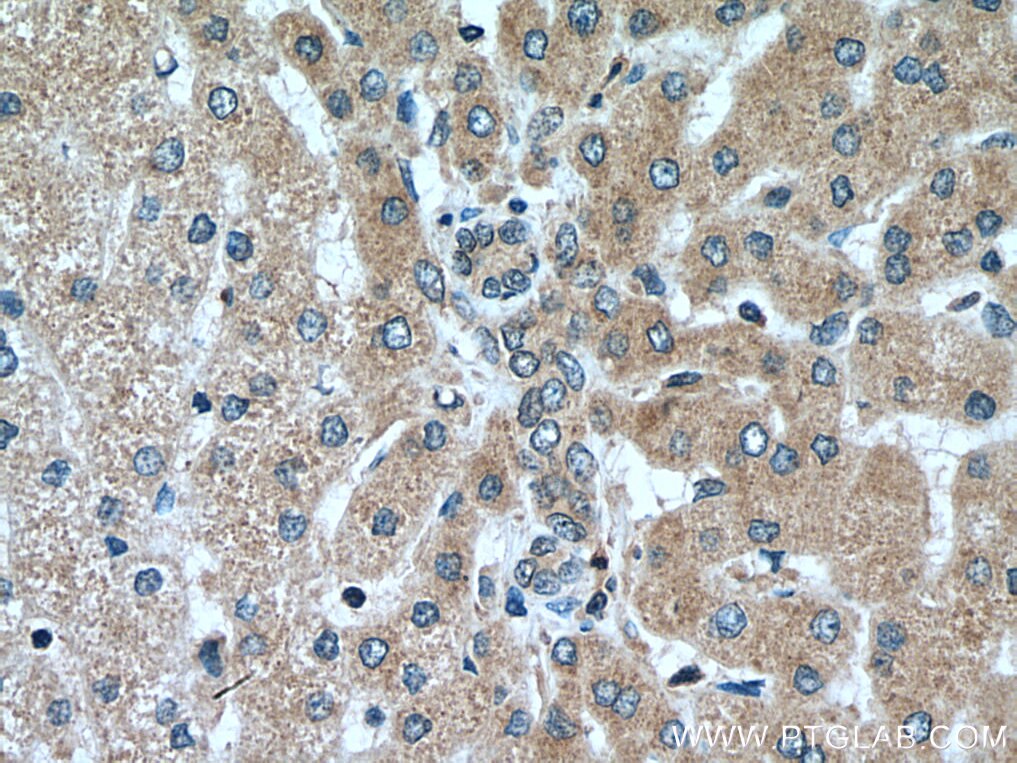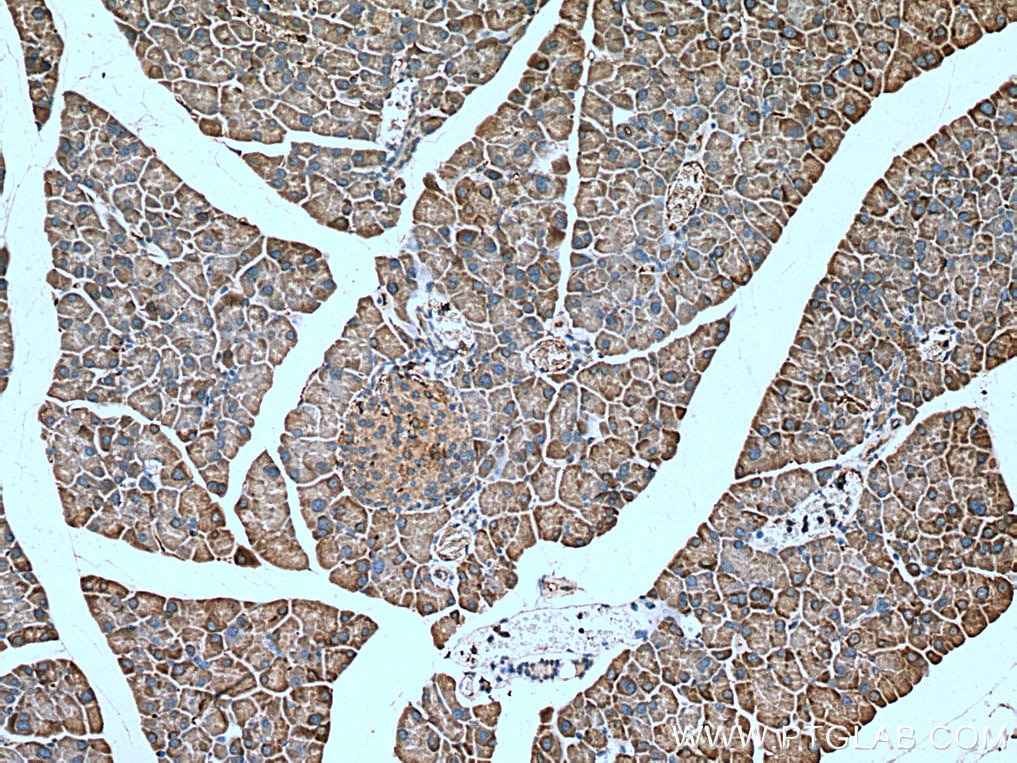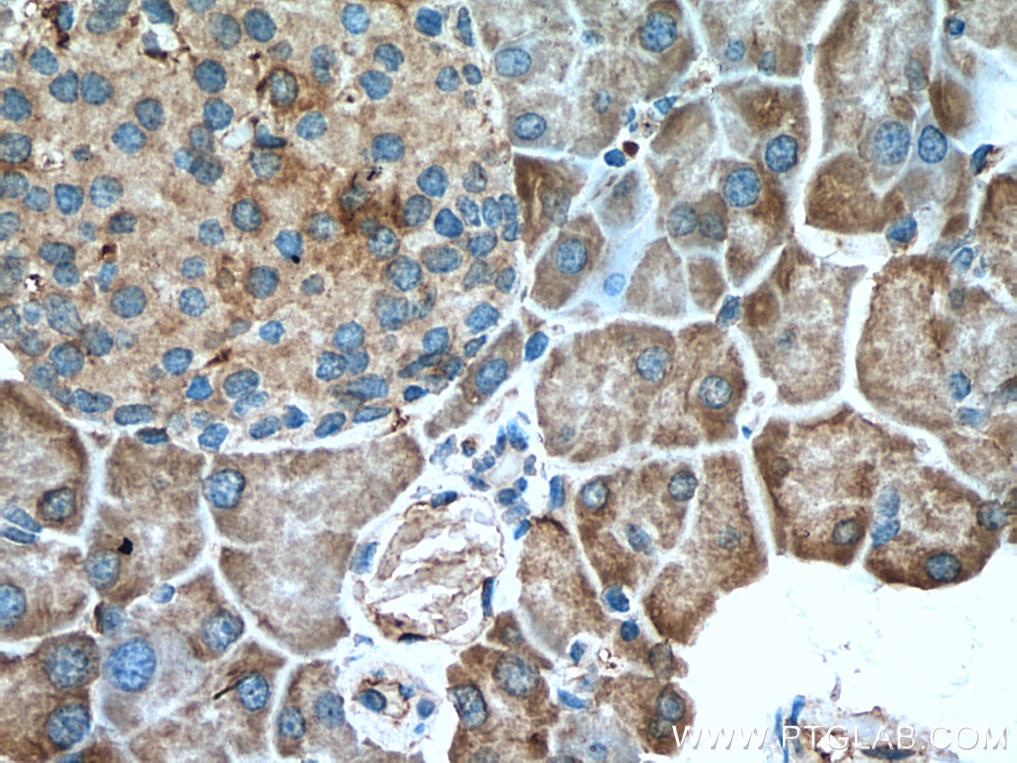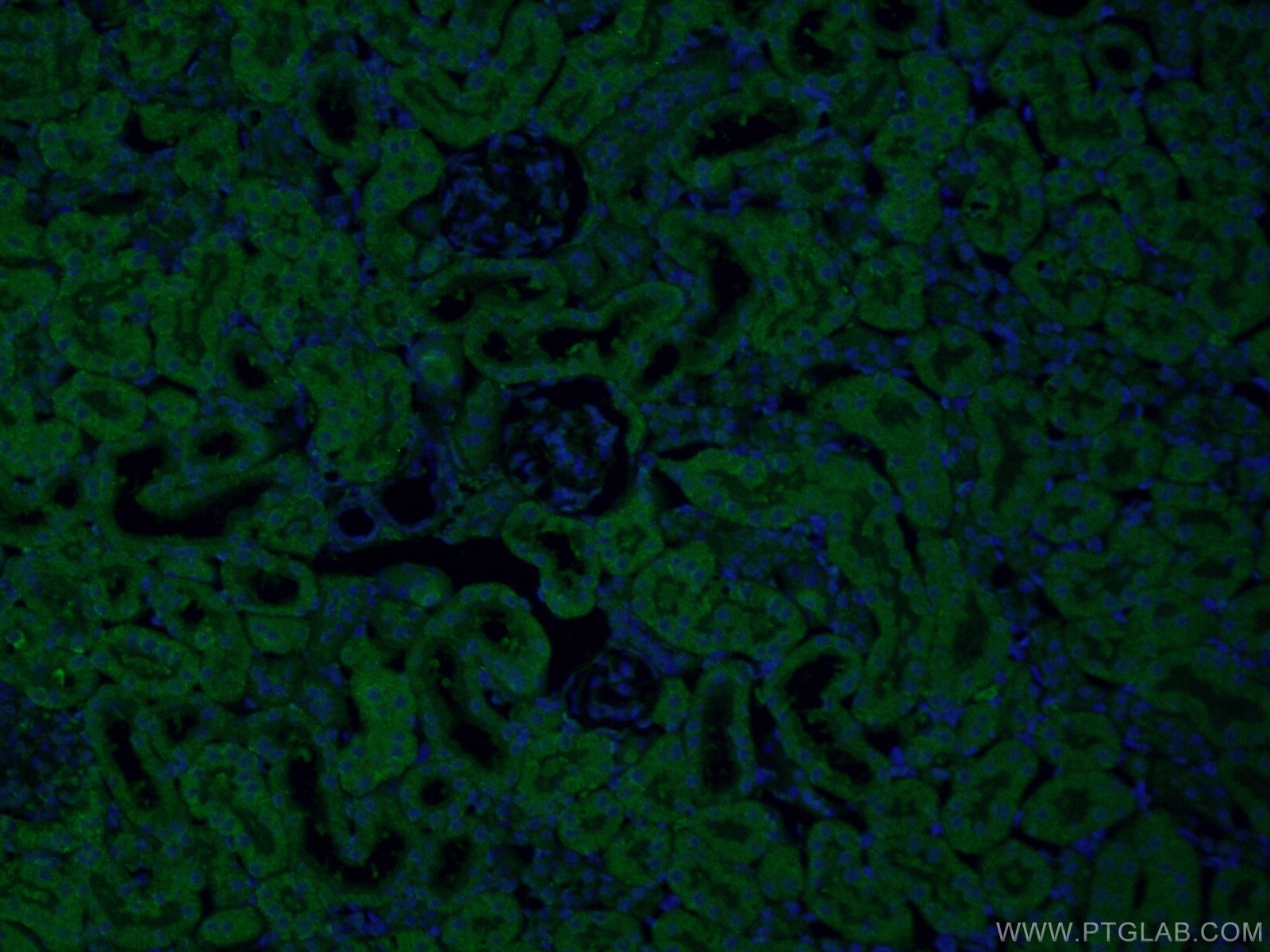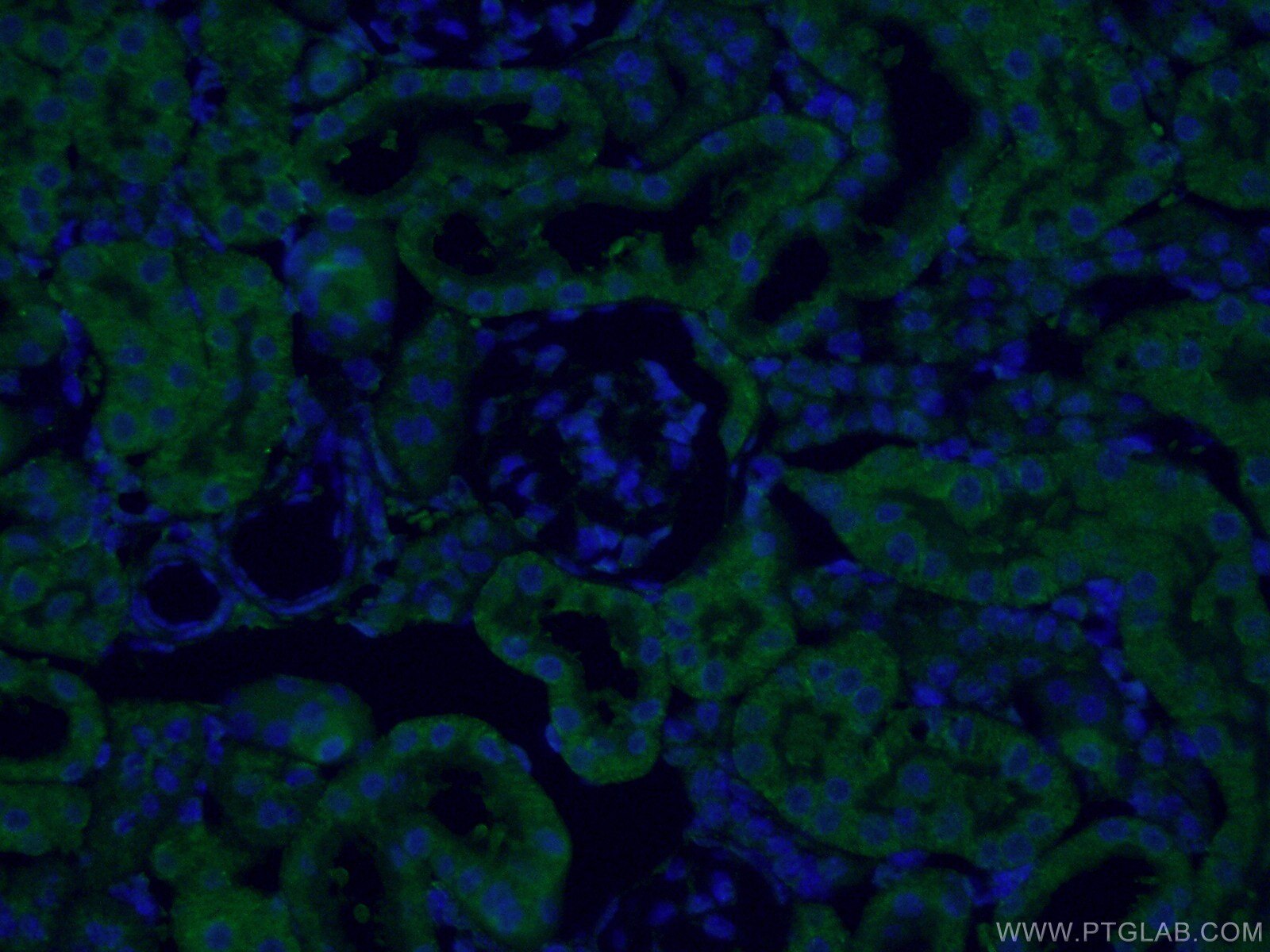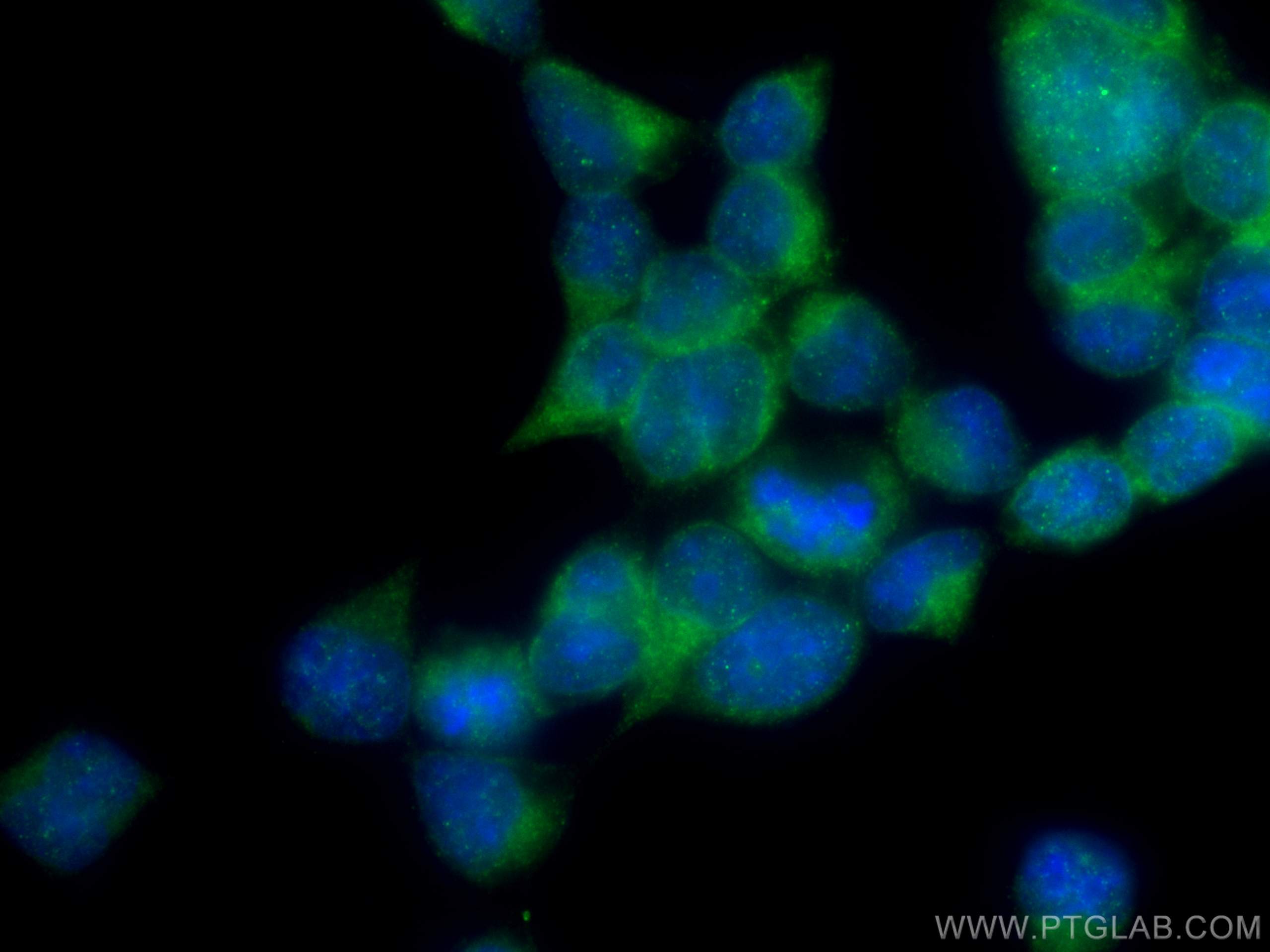- Featured Product
- KD/KO Validated
SEC63 Polyklonaler Antikörper
SEC63 Polyklonal Antikörper für WB, IHC, IF/ICC, IF-P, IP, ELISA
Wirt / Isotyp
Kaninchen / IgG
Getestete Reaktivität
human, Maus, Ratte
Anwendung
WB, IHC, IF/ICC, IF-P, IP, ELISA
Konjugation
Unkonjugiert
Kat-Nr. : 13978-1-AP
Synonyme
Geprüfte Anwendungen
| Erfolgreiche Detektion in WB | A431-Zellen, HEK-293-Zellen, PC-3-Zellen |
| Erfolgreiche IP | A431-Zellen |
| Erfolgreiche Detektion in IHC | humanes Lebergewebe, Maus-Pankreasgewebe Hinweis: Antigendemaskierung mit TE-Puffer pH 9,0 empfohlen. (*) Wahlweise kann die Antigendemaskierung auch mit Citratpuffer pH 6,0 erfolgen. |
| Erfolgreiche Detektion in IF-P | Mausnierengewebe |
| Erfolgreiche Detektion in IF/ICC | HEK-293-Zellen |
Empfohlene Verdünnung
| Anwendung | Verdünnung |
|---|---|
| Western Blot (WB) | WB : 1:1000-1:4000 |
| Immunpräzipitation (IP) | IP : 0.5-4.0 ug for 1.0-3.0 mg of total protein lysate |
| Immunhistochemie (IHC) | IHC : 1:50-1:500 |
| Immunfluoreszenz (IF)-P | IF-P : 1:50-1:500 |
| Immunfluoreszenz (IF)/ICC | IF/ICC : 1:50-1:500 |
| It is recommended that this reagent should be titrated in each testing system to obtain optimal results. | |
| Sample-dependent, check data in validation data gallery | |
Veröffentlichte Anwendungen
| KD/KO | See 2 publications below |
| WB | See 5 publications below |
| IF | See 1 publications below |
Produktinformation
13978-1-AP bindet in WB, IHC, IF/ICC, IF-P, IP, ELISA SEC63 und zeigt Reaktivität mit human, Maus, Ratten
| Getestete Reaktivität | human, Maus, Ratte |
| In Publikationen genannte Reaktivität | human, Maus |
| Wirt / Isotyp | Kaninchen / IgG |
| Klonalität | Polyklonal |
| Typ | Antikörper |
| Immunogen | SEC63 fusion protein Ag5021 |
| Vollständiger Name | SEC63 homolog (S. cerevisiae) |
| Berechnetes Molekulargewicht | 88 kDa |
| Beobachtetes Molekulargewicht | 83-90 kDa |
| GenBank-Zugangsnummer | BC047221 |
| Gene symbol | SEC63 |
| Gene ID (NCBI) | 11231 |
| Konjugation | Unkonjugiert |
| Form | Liquid |
| Reinigungsmethode | Antigen-Affinitätsreinigung |
| Lagerungspuffer | PBS with 0.02% sodium azide and 50% glycerol |
| Lagerungsbedingungen | Bei -20°C lagern. Nach dem Versand ein Jahr lang stabil Aliquotieren ist bei -20oC Lagerung nicht notwendig. 20ul Größen enthalten 0,1% BSA. |
Hintergrundinformationen
SEC63 is an integral ER membrane protein. SEC63 and SEC62 form a dimeric complex and play a central role in the translocation of nascent and newly synthesized precursor polypeptides into the ER. Mutations in the gene encoding SEC63 cause polycystic liver disease in humans. The intact SEC63 protein is usually detected around 83-90 kDa, while smaller cleavage products can be observed by autophagy proteolysis (PMID: 25052096)
Protokolle
| PRODUKTSPEZIFISCHE PROTOKOLLE | |
|---|---|
| WB protocol for SEC63 antibody 13978-1-AP | Protokoll herunterladen |
| IHC protocol for SEC63 antibody 13978-1-AP | Protokoll herunterladenl |
| IF protocol for SEC63 antibody 13978-1-AP | Protokoll herunterladen |
| IP protocol for SEC63 antibody 13978-1-AP | Protokoll herunterladen |
| STANDARD-PROTOKOLLE | |
|---|---|
| Klicken Sie hier, um unsere Standardprotokolle anzuzeigen |
Publikationen
| Species | Application | Title |
|---|---|---|
Mol Cell Cotranslational Stabilization of Sec62/63 within the ER Sec61 Translocon Is Controlled by Distinct Substrate-Driven Translocation Events. | ||
J Am Soc Nephrol Essential Role of X-Box Binding Protein-1 during Endoplasmic Reticulum Stress in Podocytes.
| ||
J Biol Chem ER entry pathway and glycosylation of GPI-anchored proteins are determined by N-terminal signal sequence and C-terminal GPI-attachment sequence
| ||
Neural Regen Res AAV2-PDE6B restores retinal structure and function in the retinal degeneration 10 mouse model of retinitis pigmentosa by promoting phototransduction and inhibiting apoptosis |
